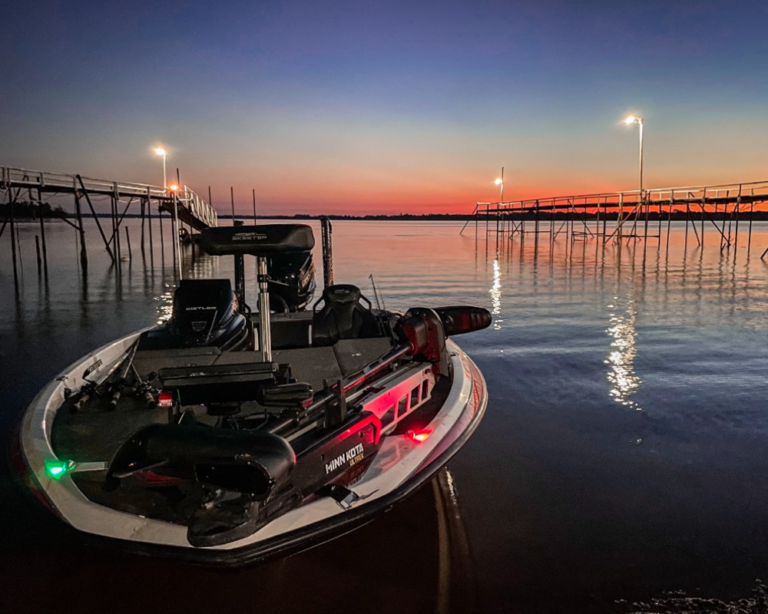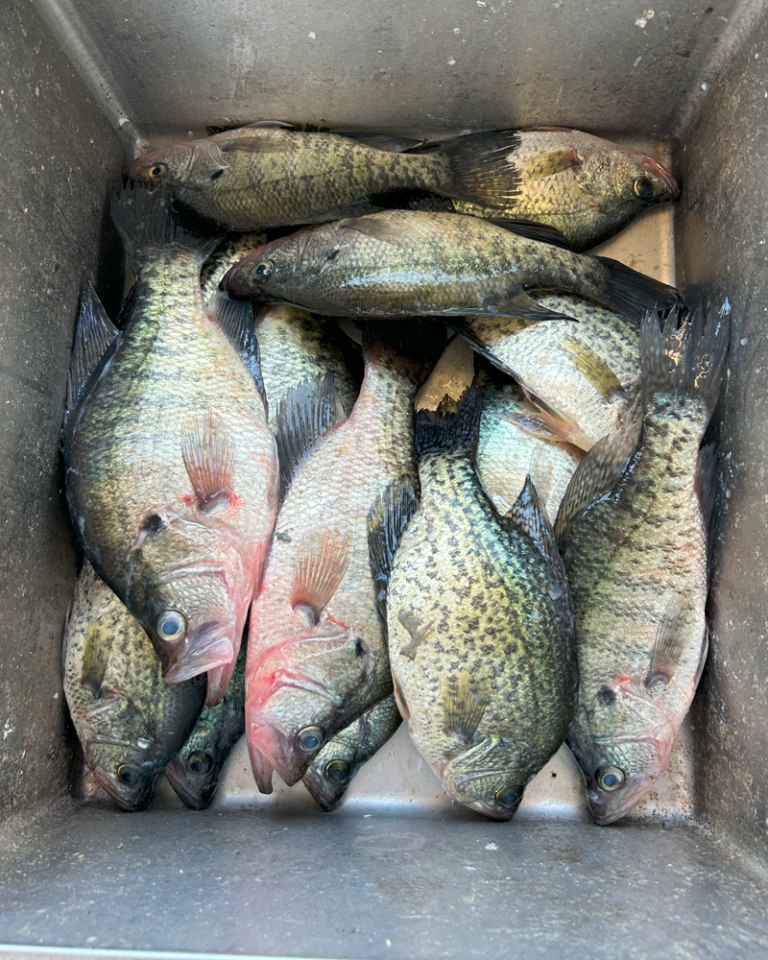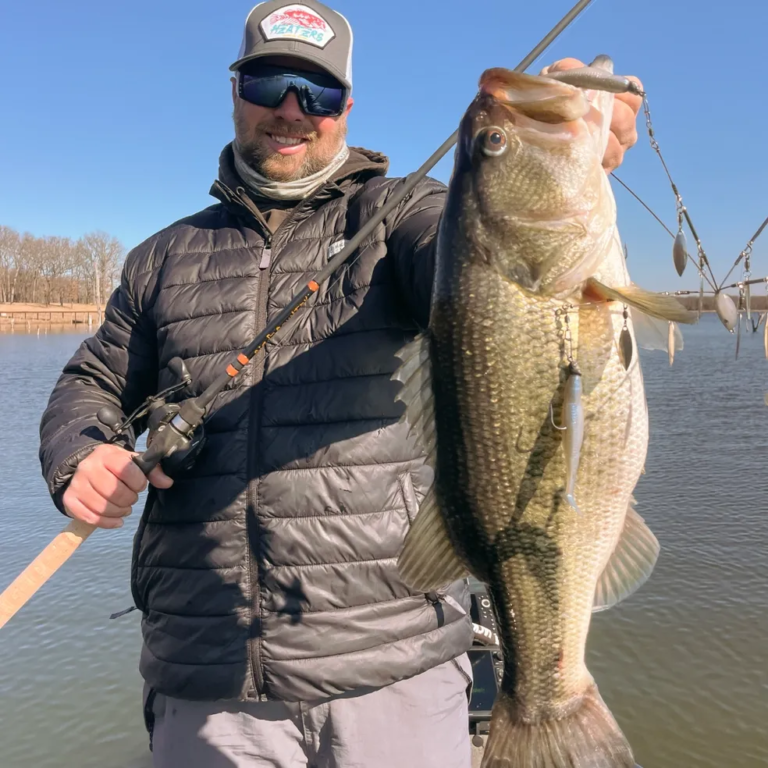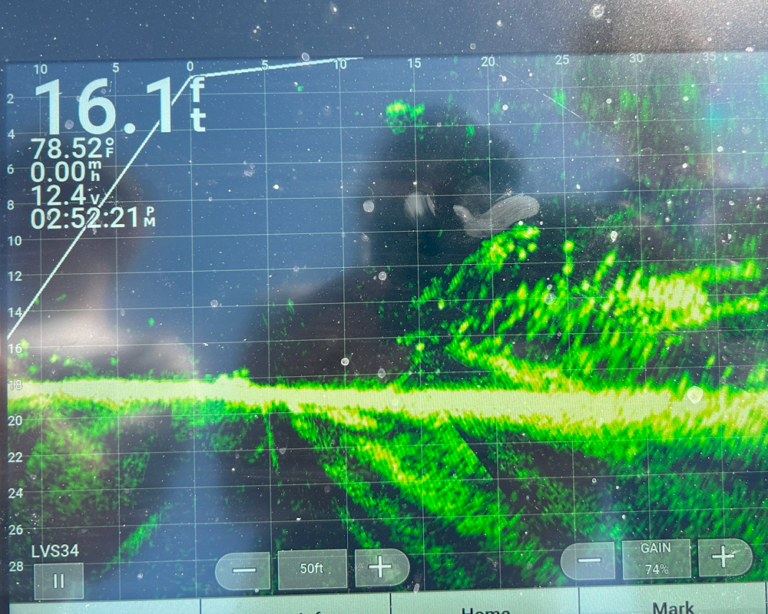Top 10 Crappie Fishing Spots in Texas: Your Ultimate Guide to a Bountiful Catch!
Top 10 Crappie Fishing Spots in Texas: Your Ultimate Guide to a Bountiful Catch!
Are you ready to reel in the big one? Texas is home to some of the best crappie fishing spots, offering anglers a chance to hook trophy-sized catches and enjoy the great outdoors. Whether you’re a seasoned pro or just starting out, this ultimate guide will navigate you through the top 10 crappie fishing locations across the Lone Star State. From the pristine lakes of East Texas to the scenic rivers in the Hill Country, each spot boasts its unique charm and abundant fish populations. Discover the ideal times to cast your line, the best bait to use, and top local tips that will enhance your fishing experience. Grab your gear, and let’s dive into an adventure that promises not just a bountiful catch, but unforgettable moments. Get ready to mark your fishing map with these prime locations!
Understanding Crappie Species: White vs. Black Crappie
When it comes to crappie fishing, understanding the differences between white and black crappie is essential for a successful catch. Both species are popular among anglers due to their abundance and delicious taste, but they have distinct characteristics that can impact your fishing strategy. White crappie, scientifically known as Pomoxis annularis, are typically found in warmer, turbid waters and are more tolerant of varying conditions. Black crappie, or Pomoxis nigromaculatus, prefer clearer, cooler waters with abundant vegetation. Identifying these species can help you choose the right fishing spot and gear.
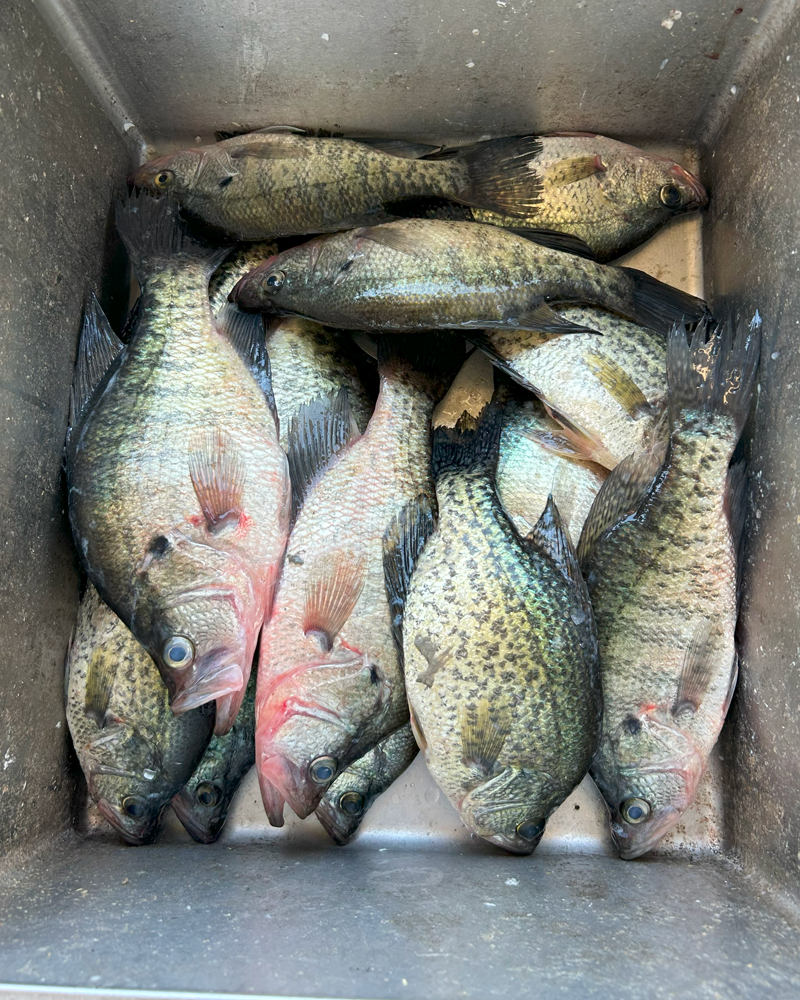
White crappie are generally more elongated with a silvery appearance and have vertical bars along their sides. Their dorsal fins are also spaced further apart compared to their black counterparts. On the other hand, black crappie have a more rounded body shape and are covered with a unique pattern of black spots. They tend to be slightly smaller but are known for their fighting spirit, making them a thrilling catch for any angler.
Knowing where each species prefers to reside can significantly enhance your fishing experience. White crappie are often found in large schools near submerged structures, such as brush piles or fallen trees, in open water. Black crappie, however, tend to stick closer to aquatic plants and other submerged vegetation. By targeting the right habitat, you’ll increase your chances of reeling in a substantial catch.
Best Seasons for Crappie Fishing in Texas
Timing is everything in crappie fishing, and Texas offers prime opportunities throughout the year. However, understanding the best seasons for crappie fishing can drastically improve your chances of success. Spring and fall are considered peak seasons for crappie fishing in Texas due to the spawning and feeding behaviors of the fish. During these times, crappie are more active and tend to move into shallower waters, making them easier to catch.
Spring, typically from March to May, is the optimal time for crappie fishing. As the water temperature rises, crappie move to shallow spawning grounds, often in water less than six feet deep. This period is characterized by the fish’s aggressive feeding behavior as they prepare for reproduction, making them highly susceptible to bait. Using live minnows or small jigs can be particularly effective during this time.
Fall, from September to November, is another excellent season for crappie fishing. As the water temperature cools, crappie once again become more active and move towards shallower waters. This season is marked by the fish’s need to feed heavily before the winter, making them more likely to take bait. Using a combination of artificial lures, such as jigs and crankbaits, can yield impressive results. Understanding these seasonal patterns will help you plan your fishing trips more effectively and increase your chances of a bountiful catch.
Top 10 Crappie Fishing Spots in Texas
1. Lake Fork
Lake Fork is renowned for its trophy-sized crappie, attracting anglers from all over the country. Located in East Texas, this reservoir is a crappie haven, thanks to its abundant submerged structures and rich aquatic vegetation. The lake’s clear waters provide an ideal habitat for black crappie, making it a top destination for those seeking sizable catches. Spring and fall are the best times to visit, with numerous hotspots around the lake’s brush piles and creek channels.
2. Sam Rayburn Reservoir
Sam Rayburn Reservoir, one of the largest reservoirs in Texas, is another prime crappie fishing location. This East Texas hotspot offers a diverse range of fishing environments, from deep open waters to shallow coves lined with timber and vegetation. Anglers can expect to find both white and black crappie in abundance. The reservoir’s vast size means there’s always a new spot to explore, and local guides can provide valuable insights into the best fishing techniques and locations.
3. Cedar Creek Lake
Cedar Creek Lake, situated southeast of Dallas, is a crappie angler’s paradise. This lake is known for its clear waters and extensive network of docks, which provide excellent cover for crappie. The lake’s numerous brush piles and submerged structures make it an ideal location for both novice and experienced anglers. Spring is particularly productive, as crappie move into the shallows for spawning, but the lake offers great fishing opportunities year-round.
4. Lake Texoma
Straddling the Texas-Oklahoma border, Lake Texoma is famous for its diverse fish population, including a healthy number of crappie. The lake’s vast size and varied habitats make it a great destination for crappie fishing. Anglers can find success in the numerous coves, creek channels, and submerged structures scattered throughout the lake. Hiring a local guide can be beneficial, as they can provide expert knowledge on the best spots and techniques for catching crappie.
5. Lake O’ the Pines
Located in the Piney Woods region of East Texas, Lake O’ the Pines is a picturesque destination for crappie fishing. The lake’s clear waters and abundant vegetation create an ideal environment for black crappie. Anglers can find success around the numerous brush piles, underwater structures, and creek channels. The lake is particularly productive during the spring spawning season, but it offers great fishing opportunities throughout the year.
6. Toledo Bend Reservoir
Toledo Bend Reservoir, which straddles the Texas-Louisiana border, is one of the largest man-made reservoirs in the United States. This massive body of water is a crappie angler’s dream, with its diverse habitats and abundant fish population. Anglers can find success around the numerous submerged structures, creek channels, and vegetation. The reservoir’s size and complexity make it a great destination for both novice and experienced anglers, and local guides can provide valuable insights into the best fishing spots and techniques.
7. Richland-Chambers Reservoir
Richland-Chambers Reservoir, located southeast of Dallas, is known for its healthy crappie population and diverse fishing environments. The lake’s numerous coves, creek channels, and submerged structures provide excellent cover for crappie. Anglers can find success year-round, but the spring and fall seasons are particularly productive. The reservoir’s size and variety of habitats make it an ideal destination for both novice and experienced anglers.
8. Lake Conroe
Lake Conroe, located just north of Houston, is a popular destination for crappie fishing. The lake’s clear waters and abundant vegetation create an ideal environment for both white and black crappie. Anglers can find success around the numerous docks, brush piles, and submerged structures scattered throughout the lake. Spring is particularly productive, as crappie move into the shallows for spawning, but the lake offers great fishing opportunities year-round.
9. Lake Livingston
Lake Livingston, located in East Texas, is one of the largest lakes in the state and a great destination for crappie fishing. The lake’s diverse habitats, including deep open waters, shallow coves, and submerged structures, provide excellent cover for crappie. Anglers can find success year-round, but the spring and fall seasons are particularly productive. The lake’s size and variety of habitats make it an ideal destination for both novice and experienced anglers.
10. Lake Palestine
Lake Palestine, located in East Texas, is a popular destination for crappie fishing. The lake’s clear waters and abundant vegetation create an ideal environment for both white and black crappie. Anglers can find success around the numerous docks, brush piles, and submerged structures scattered throughout the lake. Spring is particularly productive, as crappie move into the shallows for spawning, but the lake offers great fishing opportunities year-round.
Essential Gear for Crappie Fishing
No crappie fishing trip is complete without the right gear. Having the appropriate equipment can make a significant difference in your success and overall experience. First and foremost, a light to ultralight rod and reel combo is essential. Crappie have relatively soft mouths, so using lighter tackle helps prevent tearing the hook out when reeling them in. A rod length of 6 to 7 feet is ideal for casting accuracy and control.
Fishing line selection is another crucial aspect of crappie fishing. A 4 to 8-pound test monofilament or fluorocarbon line is recommended. These lines offer the perfect balance of strength and sensitivity, allowing you to feel even the slightest nibble. Additionally, using a clear line can help avoid spooking the fish in clear waters.
When it comes to bait and lures, versatility is key. Live minnows are a tried-and-true option for crappie fishing, as they mimic the fish’s natural prey. Jigs are also highly effective, with various colors and sizes available to match the conditions and crappie preferences. Having a variety of jig heads, soft plastic bodies, and even some small crankbaits can provide you with the flexibility needed to adapt to different situations and increase your chances of a successful catch.
Techniques and Tips for Catching Crappie
Mastering the right techniques and tips can significantly enhance your crappie fishing success. One of the most effective methods is vertical jigging, especially around submerged structures such as brush piles, docks, and standing timber. Using a small jig or live minnow, drop your bait vertically and gently jig it up and down to entice the crappie. This technique allows you to target specific depths and stay in the strike zone longer.
Another effective technique is casting and retrieving. This method is particularly useful when fishing around the edges of vegetation or in open water. Use a small jig or crankbait and cast it out, allowing it to sink to the desired depth. Then, retrieve it slowly with occasional pauses and twitches to mimic the movement of prey. This erratic action can trigger strikes from nearby crappie.
Trolling is also a popular technique for covering large areas and locating schools of crappie. This method involves slowly moving your boat while dragging multiple lines with different baits or lures at various depths. Trolling can be especially effective in larger bodies of water, such as reservoirs, where crappie may be scattered. By experimenting with different speeds, depths, and baits, you can find the most productive combination and increase your chances of a successful catch.
Local Regulations and Licensing for Fishing in Texas
Before heading out on your crappie fishing adventure in Texas, it’s essential to familiarize yourself with local regulations and licensing requirements. The Texas Parks and Wildlife Department (TPWD) oversees fishing regulations and ensures the sustainability of fish populations. All anglers aged 17 and older are required to have a valid Texas fishing license, which can be purchased online, at TPWD offices, or from authorized retailers.
In addition to a fishing license, it’s important to be aware of specific regulations related to crappie fishing. Texas has a statewide minimum length limit of 10 inches for crappie, with a daily bag limit of 25 fish per angler. However, some lakes and reservoirs may have special regulations, such as different length or bag limits, so it’s crucial to check the specific rules for the body of water you plan to fish.
Following these regulations helps ensure the sustainability of crappie populations and promotes responsible angling practices. By adhering to size and bag limits, you contribute to the conservation efforts that maintain healthy fish populations for future generations. Additionally, practicing catch and release for larger, trophy-sized crappie can help preserve the genetic diversity and overall health of the fishery.
Nearby Amenities and Accommodation Options
Planning a crappie fishing trip involves more than just finding the perfect fishing spot; it’s also essential to consider nearby amenities and accommodation options. Many of Texas’s top crappie fishing locations are surrounded by a variety of lodging choices, ranging from rustic cabins and campgrounds to comfortable hotels and vacation rentals. These accommodations provide anglers with a convenient and comfortable base for their fishing adventures.
For those who prefer a more rustic experience, many lakes and reservoirs offer campgrounds with amenities such as picnic areas, restrooms, and boat ramps. Camping allows you to immerse yourself in nature and enjoy the tranquility of the great outdoors. Some popular camping destinations near top crappie fishing spots include Lake Fork, Sam Rayburn Reservoir, and Lake O’ the Pines.
If you prefer more modern comforts, there are plenty of hotels, motels, and vacation rentals available near Texas’s top fishing destinations. Many of these accommodations offer amenities such as boat parking, cleaning stations, and free Wi-Fi, making your stay as convenient and enjoyable as possible. Popular options include lodges and resorts near Lake Texoma, Cedar Creek Lake, and Toledo Bend Reservoir.
Community and Resources for Crappie Fishing Enthusiasts
One of the best ways to enhance your crappie fishing experience is by connecting with the fishing community and utilizing available resources. Texas is home to a vibrant community of crappie fishing enthusiasts who share their knowledge, tips, and experiences through various platforms. Joining local fishing clubs, forums, and social media groups can provide valuable insights and foster connections with fellow anglers.
Local fishing clubs and organizations often host events, tournaments, and workshops that cater to crappie fishing enthusiasts. These gatherings provide opportunities to learn from experienced anglers, participate in friendly competitions, and stay updated on the latest techniques and trends. Some notable organizations include the Texas Crappie Fishing Club and the East Texas Crappie Club.
In addition to community connections, there are numerous online resources available to help you plan and execute your crappie fishing trips. Websites, blogs, and YouTube channels dedicated to crappie fishing offer a wealth of information on fishing techniques, gear recommendations, and location guides. Utilizing these resources can enhance your knowledge and improve your chances of a successful catch.
Conclusion: Planning Your Crappie Fishing Adventure in Texas
Embarking on a crappie fishing adventure in Texas promises not only a bountiful catch but also unforgettable moments in the great outdoors. With its diverse range of top fishing spots, from the pristine lakes of East Texas to the scenic rivers in the Hill Country, Texas offers something for every angler. Understanding the differences between white and black crappie, the best seasons for fishing, and the top locations will set you on the path to success.
Equipping yourself with the right gear and mastering effective techniques are crucial steps in enhancing your crappie fishing experience. Familiarizing yourself with local regulations and licensing ensures that you fish responsibly and contribute to the sustainability of fish populations. Additionally, considering nearby amenities and accommodation options will make your trip more convenient and enjoyable.
Connecting with the crappie fishing community and utilizing available resources can provide valuable insights and foster connections with fellow anglers. Whether you’re a seasoned pro or just starting out, there’s always something new to learn and experience in the world of crappie fishing. So grab your gear, plan your trip, and get ready to mark your fishing map with these prime locations in Texas. Your ultimate guide to a bountiful catch awaits!
